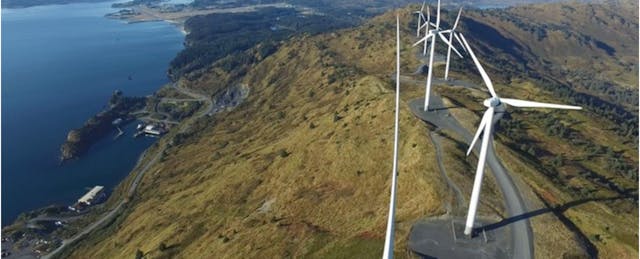As many of us know, modern public schools have roots in the Industrial Age; they were designed to prepare students for the 19th century workforce. Learning was sorted into disconnected subjects and compartmentalized by grades and age groups, with students sent along the proverbial conveyor belt of learning.
Thanks in large part to modern standards, this model remains today, with curriculum that is a mile wide and an inch deep—and plenty of critics. Modern industry, however, has broken away from this tradition. Now “industry” workers, rather than serving on a production line, are required to have an entirely different skill set: problem solving, adapting, integrating multiple academic disciplines simultaneously. Project management and rapid prototyping dominates business and many of our most-sought after jobs require collaboration and multidisciplinary, higher-order thinking.
This dichotomy has created an impasse; the structure of public schools is at odds with needs of modern work. But the answer isn’t to forget industry altogether and shun our roots in preparing students for work, but rather to better bridge the school-to-business divide.
Unfortunately, most public school educators are not equipped to take on the schedule and demands of modern, industry-level workflow by themselves. It's not what they were trained to do. On the other hand, industry is not able to slow down and wait for school schedules and grading periods to shoehorn real-world rapid prototyping. So how to span the gap? Throughout Alaska, partnerships like the ones between public schools and Trillium Learning’s World Bridge Program offer a solution—and a new way to think about what industrialized education could look like.
Changing the structure of school: Teachers as project managers, students as professionals
When schools participate in the World Bridge Program, they commit to fundamentally changing the way students—and teachers—learn. In a nutshell: the program allows students to join an industry-level Research and Development project that is driven by a business or community need, with partners like NASA, the Alaska Aerospace Corporation, and even the University of Massachusetts.
Often teachers faced with a World Bridge pedagogy ask, “What’s the curriculum? What’s the first lesson?” But World Bridge projects do not revolve around a school schedule, grading period, or scope and sequence curriculum. The teacher is not the evaluator of the project at all—industry professionals are the evaluators. Instead teachers participate in project-based learning at the same time as the student. They develop the same skills expected of the students, as determined by industry leaders. It is shifting the power differential of the classroom, but it is an essential shift, from teacher to project manager.
In this system, the teacher tracks and facilitates just-in-time personalized learning through face-to-face instruction or computer–based instructional resources. The school establishes micro-credentials and badging to demonstrate school credits and document achievement. The teacher focuses on the specialized facilitation of supporting a student’s learning while industry leaders drive the cutting edge relevant learning experiences and application.
Bridging the gap: A real-world example
Perhaps the easiest way to explain how a World Bridge Program works is through an example: The NASA World Wind Europa Challenge. In the fall of 2014, Kodiak Island Borough School District in Alaska joined with Trillium Learning to build a better sensor platform, which included magnetometers, to understand precursors to earthquakes and help better forecast them.

Participating schools created time and a place for students to work beyond the school day and semester schedule, to develop hardware and software, along with critical thinking and project management skills. The industry professional made time to conduct weekly status reviews and evaluate and advise the student engineers, scientists, and project managers. Trillium provided a liaison “bridge” to keep the communication and work moving.
The finished product was impressive. The students took a concept for a sensor platform and set up a system to rapidly generate data. This data was streamed and visualized to a web-based platform called NASA World Wind. Local and national industry professionals worked with students outside of the classroom to share skills to keep up with the project demands. Learning how to analyze, evaluate and synthesize meaningful information in real-world application was facilitated by industry professionals and the World Bridge liaison.
Why it works
It comes down to how students approach learning. Think of it like this: normally when schools teach how to write a research paper, students taught how to conduct research, format, edit for grammar, etc. Then we give students topic choices, often with little guidance and little time to edit. The writing process is designed around the form of writing. Not many students get excited about writing a research paper—unless they deeply understand the topic.
That’s the point of a World Bridge Project. When students write, they deeply know and understand the topic. Formatting is painless because it’s just organizing something they know and understand very well. They’re able to do the higher order thinking, and go a mile deep.
The industry standards for this type of learning can be described as “process standards.” These are not Machine-Age, factory-based checklists, but dynamic learning systems applying, analyzing, evaluating, and synthesizing for desired outcomes.
When students get involved in just one World Bridge project they developed skills and content which can translate into the typical classroom. The typical mile wide inch deep curricula is now a resource for students to apply their deep knowledge acquired through their World Bridge experience.
Please note, these projects are designed to foster failure as an intended process. THIS IS THE RIGHT WORK. The learning occurs in the reflection and analysis of each failure and then is fueled by the next attempt. This is what school was always supposed to do—engage students in learning and prepare them for life. Schools that only measure basic academic skills will never drive the professional skills expected of their graduates. If schools are to make students ready for college and careers, schools must be made ready to deliver the goods.


